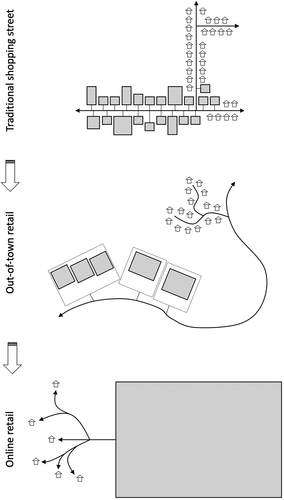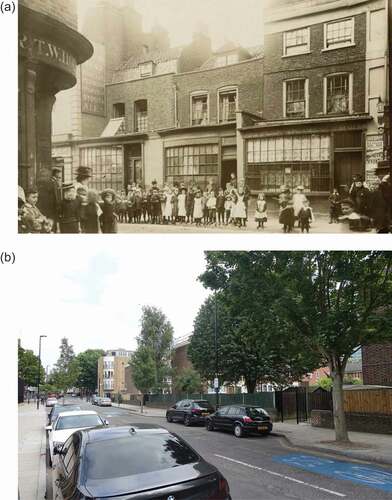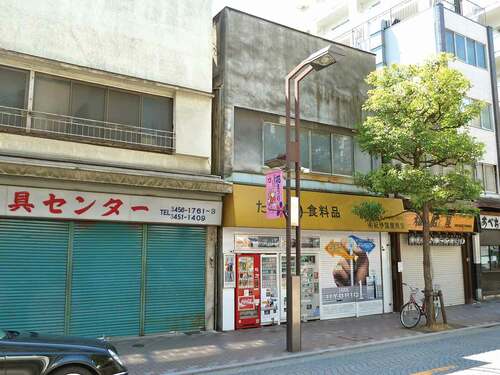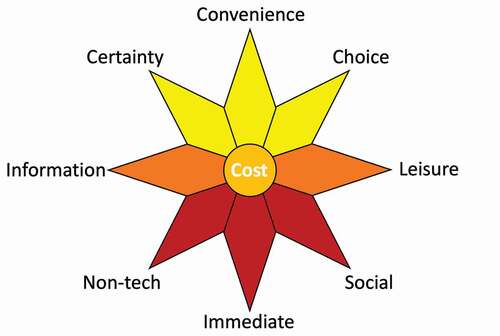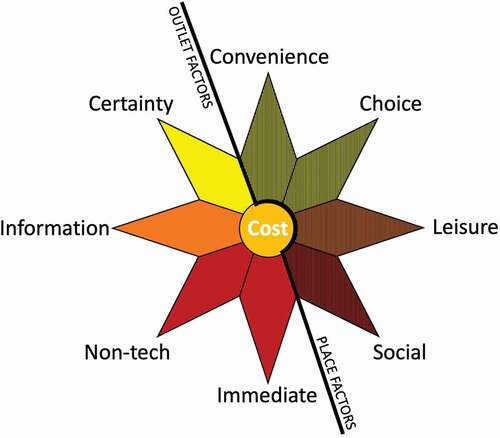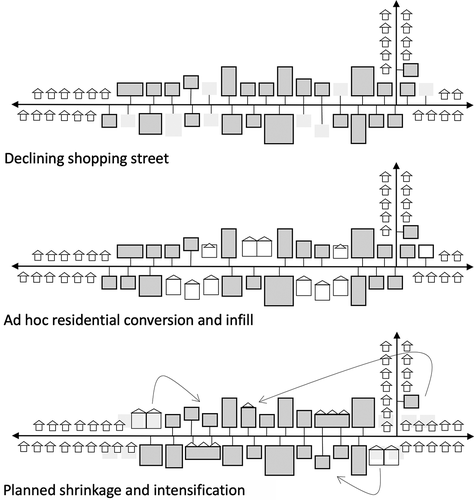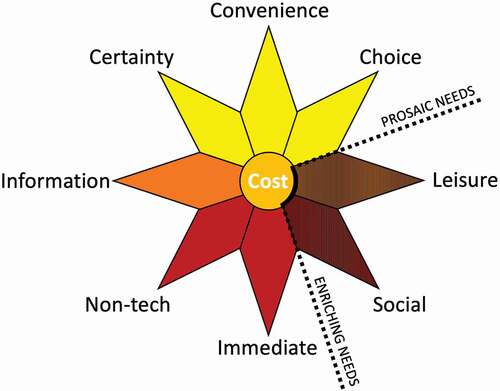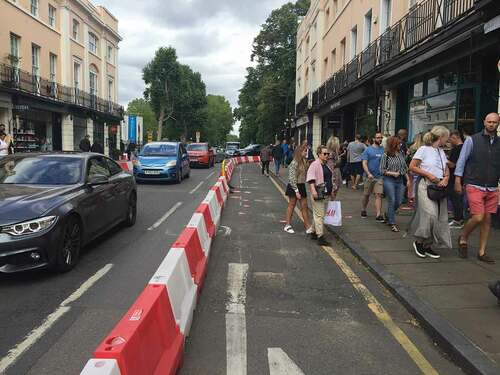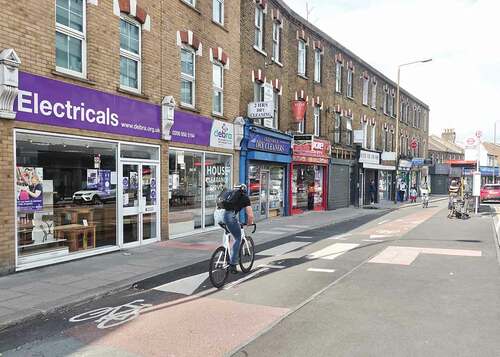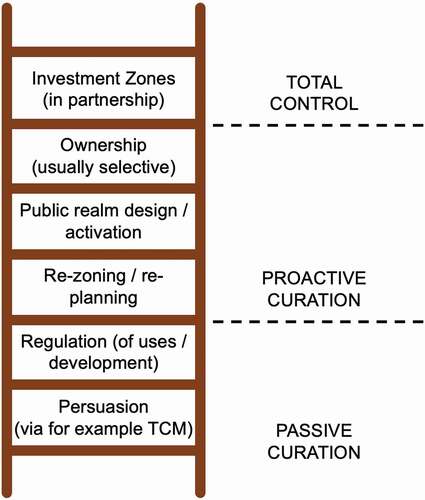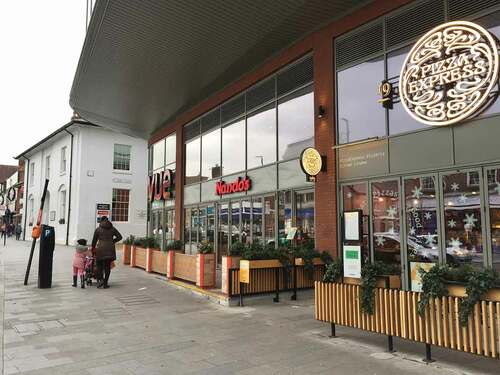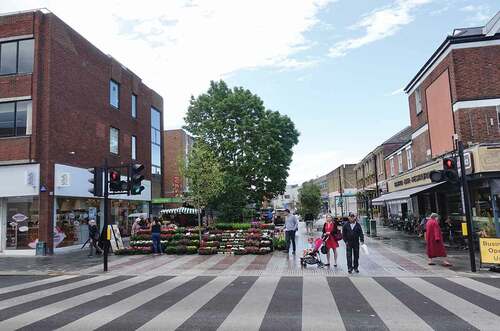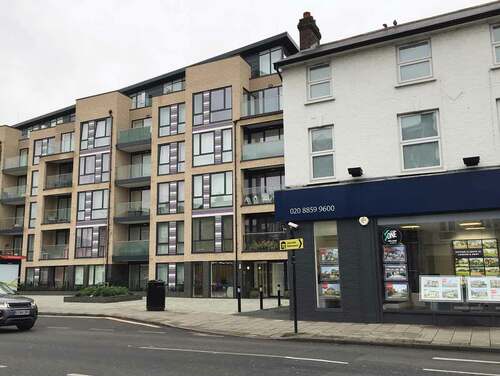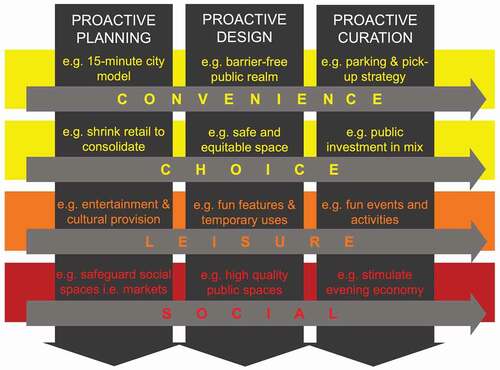Figures & data
Figure 2. While a few retail uses still hang-on on this high street, much of it is abandoned retail interspersed with residential. A future as a thriving high street seems unlikely.
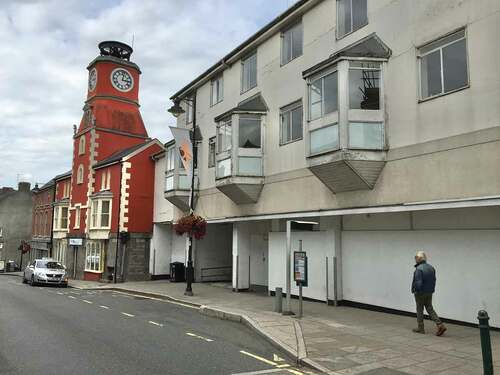
Figure 3. The desirable (often invisible) high street mix (The Geoinformation Group, Map data @2020).
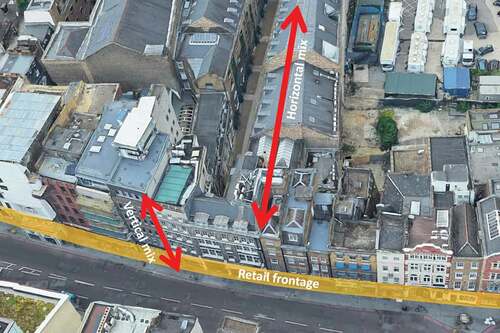
Figure 4. North east London showing the streets with greatest mix – the local high streets – with particular concentrations following the line of Roman roads out of the city to the north and east.
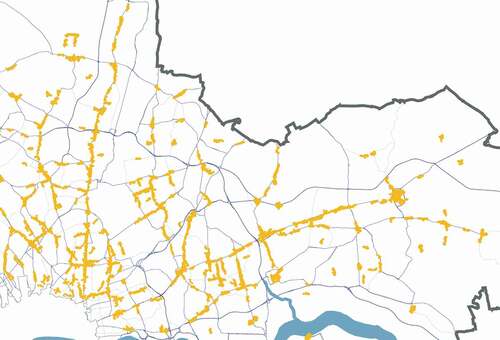
Figure 7. The journey from mixed, integrated and place-dependent to separated, disintegrated and non-place urbanism.
